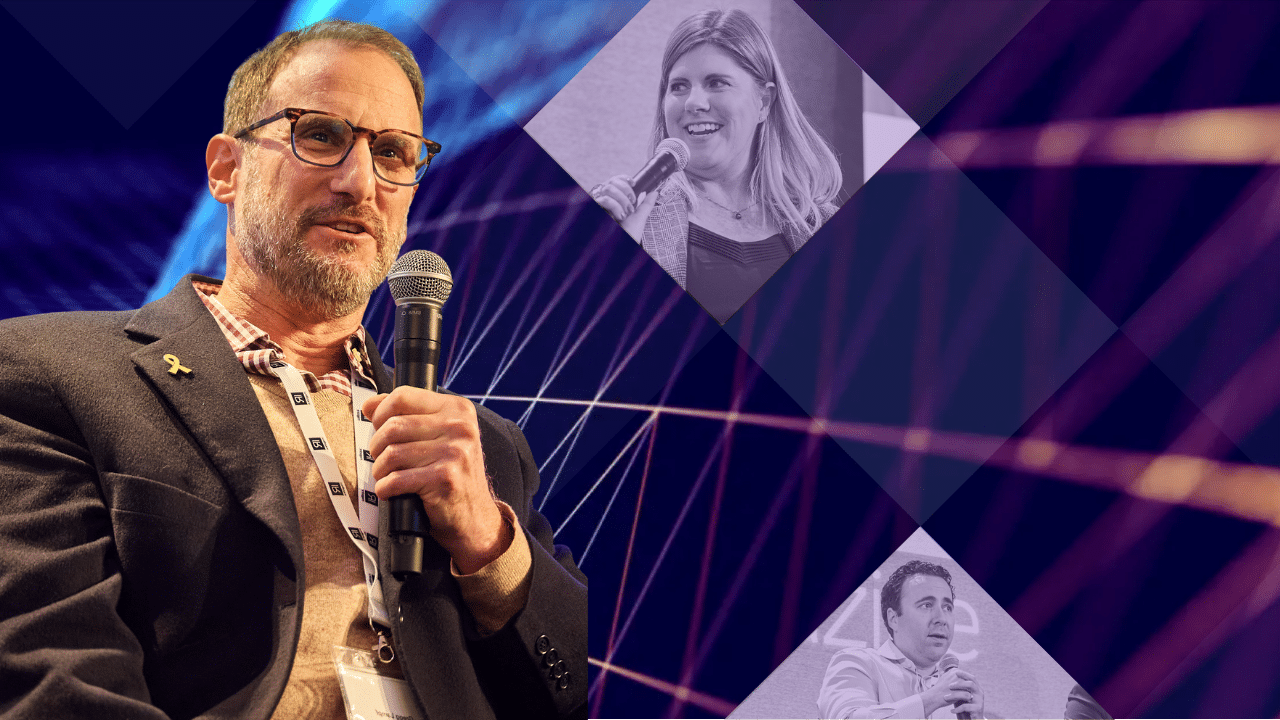Pulling off a successful investor/analyst day can make or break an IRO’s career. They are expensive, high-profile events where failure is not an option. You want to draw a crowd and create a buzz but stay within an increasingly tight budget.
‘People go to face-to-face events for different reasons now,’ says Kathleen Schaub, vice president of the CMO advisory service at International Data Corporation. ‘There are tons of ways to get data on a company. But an analyst day is your only opportunity to look a manager in the eye and exchange nuanced, unscripted information.’
Accordingly, cutting-edge IR teams are increasingly moving from formal presentations that risk ‘death by PowerPoint’ toward an arena more geared to interactive Q&A and informal, social networking. IR Magazine asked four veteran IR impresarios how they deliver information today.
The round-robin manoeuver
For Mike Sullivan, vice president of IR at Applied Materials, hosting an investor day seemed the ideal way to offer the Street an in-depth look at the Silicon Valley hi-tech’s new C-suite and growth strategy.
Historically, similar messages might have been conveyed via visits to New York or through analyst briefings at the annual Semicon West trade show. But this time Sullivan wanted to separate the firm from the crowd. He also wanted investors and analysts to experience firsthand the work being done at its semiconductor capital equipment business.
A carefully structured site visit to the company’s Santa Clara headquarters would fit the bill. ‘We had a lot of change going on in the company,’ says Sullivan. ‘It was a key analyst meeting. We felt we needed to make a statement.’
Venue fixed, the next question was when to do it. Piggybacking off the high-profile Semicon gathering (held Tuesday to Thursday following the Fourth of July weekend) seemed like a good idea. The problem was, only die-hards would sacrifice part of their weekend to attend a Monday morning conference.
So Sullivan juggled the ‘traditional’ sequence of investor day events to allow them to do just that. Following a short general presentation at 8.00 am, a group of 68 early-bird analysts and investors were divided into four groups for a round-robin tour of three highly technical sessions with unit managers and a visit to the clean room, a place Sullivan dubs ‘the heart and soul of what we do’.
Serving as backdrop to a number of presentations, the clean room featured ‘bunny-suited’ customers conducting R&D with Applied Materials technology. Each group in turn cycled through an airlock for a penultimate ‘windows-in’ look. ‘That leaves an impression,’ comments Sullivan. ‘Instead of mere PowerPoints and conceptual communication about what our business is, we were able to make it fairly tangible.’
Along with an up-close look at Applied Materials’ product, Sullivan was keen to provide investors with the same intimate access to its people. Following an afternoon program featuring formal presentations and a Q&A with the new CEO and CFO, investors and analysts mingled with management over cocktails and canapés. Later, Sullivan and the management team took 24 top investors to a private room at a local restaurant where, once again, a round robin facilitated interaction, this time with management passing from table to table between courses.
‘It was a leap of faith,’ admits Sullivan. ‘But it worked – and this year we will be doing it again.’
Taking it to the Street
Curtiss-Wright Corporation also had a new CEO and strategy it wanted to introduce to the Street. But success for the diversified engineering firm lay in an entirely different approach to venue. For years it had been showing off its facilities in places like Pittsburgh, the DC area and Ottawa. But Jim Ryan, director of IR, was convinced he could draw the biggest crowd by fishing where the fish are.
‘You’ll always get a crowd that wants to see operations,’ says Ryan. ‘But you’ll get a bigger crowd in New York. Our investor day in New York last year attracted our biggest crowd ever.’
Renting adjacent presentation and display rooms at an iconic Times Square hotel, Curtiss-Wright mixed formal presentations with the ability to chat with business unit leaders about specific products during breaks. The event wrapped up before lunch. ‘We had some interesting news and 10 people presented in all,’ says Ryan. ‘But we didn’t go overboard with slides, and kept things at a half-day pace.’
That’s probably a good thing given the cost of a fancy Manhattan hotel. ‘It wasn’t easy convincing everyone it would be worth it,’ remarks Ryan. ‘But we significantly ramped up attendance and the market certainly seems to have liked the message.’
The secret to Ryan’s investor day success? A spreadsheet. ‘Six months ahead of time, we put together a spreadsheet of more than 100 line items charting every minute detail of everything we would need to accomplish to pull this thing off,’ says Ryan. ‘That meant there were no hiccups along the way and everything ran perfectly smoothly on the big day.’
Clean and nimble
Few could agree more with Ryan’s philosophy on preparation than James Buckley, senior vice president of IR and corporate communications at Clean Harbors. Prior to settling in at the Boston area-based environmental services provider, Buckley spent nearly two decades organizing investor days on the agency side. ‘There are a huge number of moving parts to be co-ordinated,’ he says. ‘The last thing you want for a showcase event for your company and management is to look disorganized.’
Even with the most assiduous planning, however, investor days are not immune to Murphy’s Law. At Clean Harbors’ last investor day, for instance, Buckley was forced to make last-minute changes to venue. ‘Getting the right space can make or break your day,’ he says. ‘One too small leaves everyone cramped and uncomfortable; one too big leaves people wondering why you couldn’t fill it.’
Getting in the Goldilocks zone meant a nimble hotel switch to a modular space. ‘The day before the event, I was up to 135 sign-ins and expected even more walk-ins,’ says Buckley. ‘We already had two adjacent rooms but both the hotel and our neighbor co-operated and we ended up absorbing a third.’
Less eager to provide a ‘social’ event, Buckley relies on good presentations from good presenters. ‘Our objective was to show off our deep bench of management talent,’ says Buckley. ‘Our CEO kept his welcoming presentation brief so investors could hear other speakers drill down into our business.’
The main event
Few do investor days better – or bigger – than Brazilian power utility Cemig. In May it hosted its 19th annual event, a three-day affair involving more than 100 guests from across the world with around 40 Cemig representatives. Creating every opportunity for dialogue is a key objective for Cemig IRO Antonio Velez Braga. ‘For the rest of the year, this audience speaks primarily with the IR team,’ he says. ‘On these days, it is the rest of the company that speaks with the investment community.’
The program begins with an opening dinner and a welcome speech by Cemig’s chair or CEO outlining the next day’s presentations. The morning of day two features Cemig’s CFO Luiz Rolla, leading a roundtable discussion on topical questions with a dozen senior executives. A one-hour Q&A follows and then lunch with each table featuring a senior officer and guests allowed to sit wherever they want. The afternoon begins with technical presentations again and concludes with a Q&A. Then it’s off to cocktails and dinner, followed the next day by a site tour of one of Cemig’s power plants.
‘Being able to talk directly with management is one of the most important parts of the event,’ says Braga. ‘We have always actively engaged with shareholders and our annual investor day is among our best opportunities to do it.’






